Part 1:
Overview of the PTSD Symptoms, or Post-Traumatic Stress Disorder Symptoms including flashbacks, chronic pains, exhaustion.
Avoidance behavior
Is very much related to procrastinating about giving full attention to the close (at hand), in favor of something that is less immediate. Avoidance behavior is likely to involve a certain sense of trepidation in coming face to face with “oneself”. This action may relate directly to an inner state of confusion, or through association.
Victimization as PTSD symptoms
When Post -Traumatic Stress Disorder has not been resolved, a mindset of victimization can persist even long after the event. You will see, quite often, that this role of “the victim” is played out as a well-structured character in order to attract attention, and doesn’t necessarily connect with the actual crisis moment. Keep in mind, though, that at the core of this mindset there is emotional residue at play due to Post-Traumatic Stress Disorder. Having been hurt in the past makes a person vulnerable to further hurt later on in life.
Flashbacks and Nightmares
Flashbacks are intrusive thoughts and memories that bring those suffering from Post-Traumatic Stress and PTSD face to face with fraught, overwhelming feelings of fear and helplessness. In theory, this is consciousness trying to come to terms with what is alive in the system. Unfortunately, in practice, it often leads to further psychological darkness and withdrawal symptoms. Nightmares related to PTSD are flashbacks in the dream state.
[thrive_leads id=’12448′]Chronic Pains
Post-Traumatic Stress Disorder and physical pain very often go hand in hand. When stress as a result of trauma is unresolved, it settles in the body’s tissues which results in residual patterns of constriction, which is often identified as a trauma vortex or energy cysts. These constriction patterns can be the cause of physical discomfort in and of themselves, or take up so much energy that they inhibit proper functioning of other systems in the body – think of the immune system, nervous system and/or digestive system. The most common chronic incidents of pain related to PTSD are in the joints, fibromyalgia and headaches/migraines.
Panic
Panic attacks go a step further than anxiety attacks do. They are often triggered by events or circumstances that are associated with past traumatic experience. This can be either on an unconscious level or consciously experienced with intrusive and overwhelming thoughts and feelings derived from past incidents. This often results in a variety of obsessive coping behaviors and/or addictions such as people avoidance, excessive (hand) washing, house cleaning, or substance abuse.
Emotional flooding
This occurs when emotion becomes too intense to be contained, or when there is a mixture of emotions emerging simultaneously. This can happen during or after the onset of trauma. Caution is advised for when this might happen during the therapeutic process, as it could easily lead to overwhelming emotional convulsions and possible retraumatization. Crying, per se, doesn’t necessarily indicate that a person is in a state of uncontrollable, overflowing emotion.
Lethargy as PTSD symptoms
PTSD causes a breach in the normal flow of energized resilience within the nervous system. It will often lead to hyperactivation followed by a “breakdown” when exhaustion starts to set in. Lethargy can possibly be related to the state of “breakdown” of the nervous system. A person suffering from PTSD may well linger in this state in order to avoid dealing with high activation and associated feelings caused by trauma.
[thrive_leads id=’12447′]Exhaustion
Post-Traumatic Stress, be it developmental or PTSD, takes up enormous amounts of energy. It is like an identity that needs to be constantly fed to keep itself alive. In time, it can become a mindset that contributes to the avoidance of the underlying emotional turmoil. No amount of sleep will remove the feeling of exhaustion as its cause is on a mental-emotional level.
Denial as PTSD Symptoms
Denial is clearly a coping mechanism to avoid dealing with the emotional strain of Post-Traumatic Stress Disorder. Unfortunately, it often becomes a “conditioned response” mindset–a habit– and will be used not only when there is an association with past traumatic incidents, but throughout everyday life and social interactions.
Severe Somatic Reactions
Chronic pain is already a severe somatic reaction. Looking deeply into the effects of Post-Traumatic Stress Disorder, these can contribute to a wide variety of physical conditions including heart attack, stroke, organ dysfunction, and autoimmune diseases. It’s epidemic if you ask me!
Dissociative Identities
Is where the dissociative behavior, as a result of trauma, takes on a life of its own. The separation becomes so marked as to give off the appearance of separate identities taking control.
Hysterical Seizures as PTSD symptoms
In the context of PTSD, these are a result of an extreme internal conflict that results in the overwhelming of the nervous system and resembles an epileptic seizure. They can also be marked by convulsive shaking, tremors and an inability to communicate with others. Shock and the processes of trauma can also include some of these symptoms but to a qualitatively different degree.
[thrive_leads id=’12447′]Self-Righteous Behavior
PTSD entails a breakdown of one’s identity through feelings of overwhelming helplessness. There is a deeply felt sense of loss of boundaries and containment. To compensate for that, or in an attempt to reclaim a sense of self, there can be the acting out of self-righteous behavior.
Which PTSD symptoms would you add? Leave your comment below.

